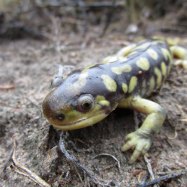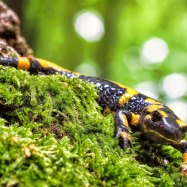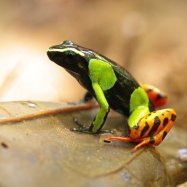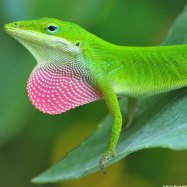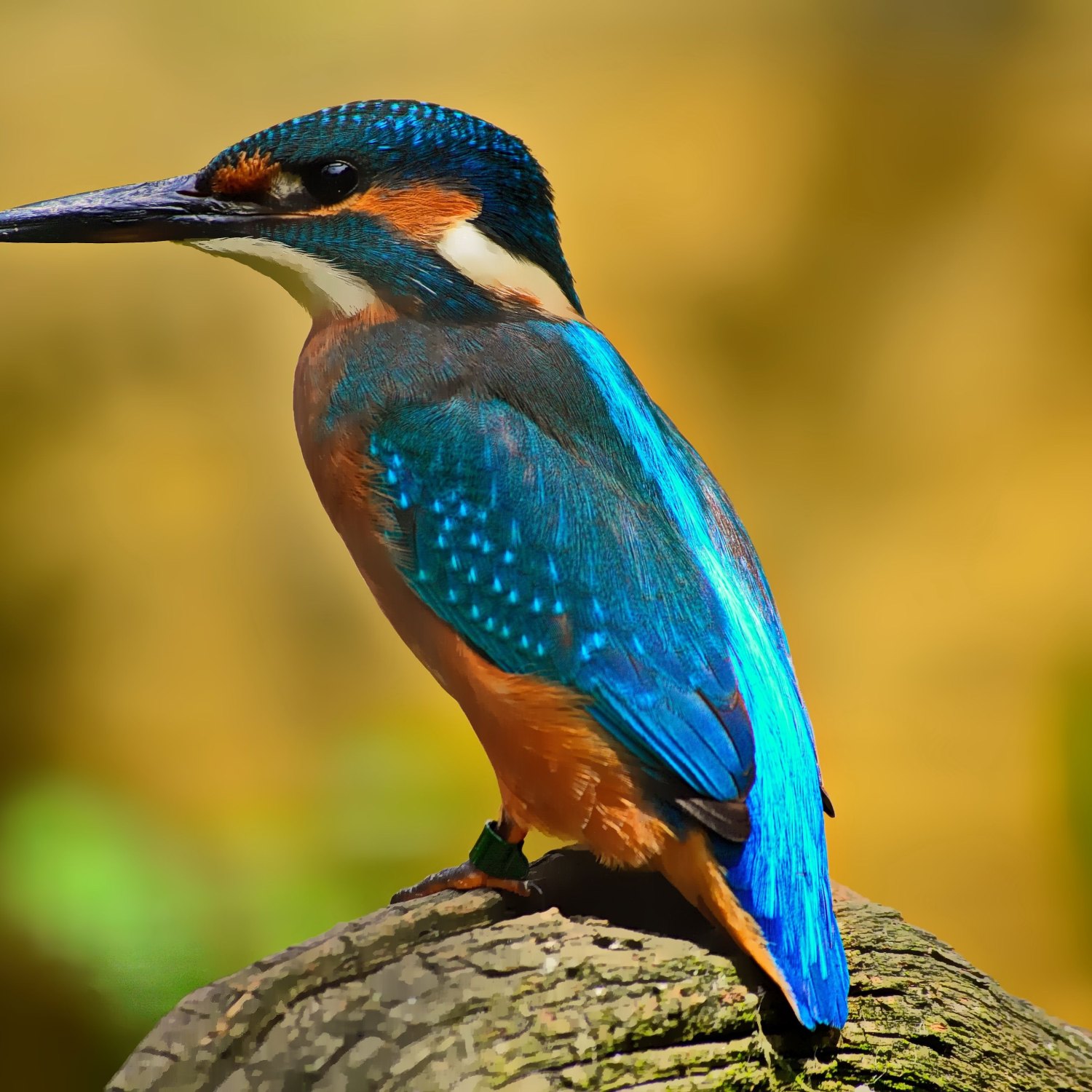
Kingfisher
17-20 centimeters (6.7-7.9 inches)
The Kingfisher is a colorful bird known for its compact body, large head, short neck, and long sharp beak. It can be found in various locations and measures 17-20 centimeters in length. Belonging to the Alcedinidae family, this little bird is one of the most iconic and fascinating creatures in the animal kingdom. Its distinctive appearance and impressive hunting skills make it a must-spot for any birdwatching enthusiast.
Animal Details Summary:
Common Name: Kingfisher
Kingdom: Animalia
Habitat: Rivers, lakes, and other bodies of freshwater
The Fascinating World of the Kingfisher: An Aerial Hunter in Water
The kingfisher, scientific name Alcedo atthis, is a small but vibrant bird that has captured the attention of bird watchers and nature enthusiasts for centuries. Its scientific name is derived from the Greek words "alcyon" and "ato", which translates to "sea king" and "nocturnal." This is a fitting name for such a magnificent creature that spends its days hunting for fish along the banks of rivers, lakes, and other bodies of freshwater.The kingfisher is a member of the animal kingdom, belonging to the phylum Chordata, class Aves, and order Coraciiformes Kingfisher. Its family, Alcedinidae, comprises of around 100 species of kingfishers. However, the common kingfisher, also known as the Eurasian kingfisher, is the most widespread and well-known among them.
This magnificent bird can be found throughout Europe, Asia, and North Africa, making it a truly global species. Its unique appearance, behavior, and habitat have made it an icon of wildlife and conservation efforts across the world. In this article, we will take a closer look at the world of the kingfisher and discover what makes it a truly remarkable creature.
The Habitat and Behavior of the Kingfisher
The kingfisher is most commonly found in habitats that feature plenty of freshwater, such as rivers, lakes, and streams. They are also known to inhabit marshes, estuaries, and even man-made water bodies in urban areas. These birds are extremely territorial and can often be seen defending their feeding and nesting grounds from other kingfishers and even larger birds.Feeding Habits and Diet
As their name suggests, kingfishers are primarily fish-eaters Kissing Bugs. They are incredibly agile and skilled hunters, known to dive into the water to catch their prey. Their streamlined bodies, compact shape, and long beaks allow them to glide effortlessly through the water, chasing after their prey with incredible speed and precision.Once a kingfisher spots a potential target, it flies above the water, hovers for a few seconds, and then plunges into the water beak first, grabbing its prey in its sharp, pointed beak. These birds have a special membrane that covers their eyes and helps protect them from the water as they dive.
While fish make up a significant portion of the kingfisher's diet, they are also known to feed on insects, crustaceans, and even small mammals. They have also been observed feeding on birds, making them highly adaptable and opportunistic hunters.
Geographical Distribution and Country of Origin
The kingfisher is a widespread species found in many countries across Europe and Asia. In Europe, it can be found in countries such as the United Kingdom, Ireland, France, Germany, and Greece, among others. In Asia, the kingfisher has a larger range and can be found in countries like India, China, Malaysia, and Japan, to name a few.Since these birds are not migratory, their location is not limited to a specific area, and they can be found throughout their range. However, they do migrate to warmer areas during the winter when food sources are scarce.
The Stunning Appearance of the Kingfisher
The kingfisher's appearance is one of its most captivating features. These birds are known for their vivid blue and orange plumage, making them a sight to behold. The blue feathers on their back, wings, and tail are iridescent, meaning they reflect light, making them appear shiny and vibrant.On the other hand, the orange feathers on the kingfisher's belly, throat, and forehead make for a striking contrast against the blue. This coloration is not just for aesthetic purposes; it serves as camouflage, blending the bird into its surroundings and making it nearly invisible to potential predators.
The Unique Anatomy of the Kingfisher
The kingfisher has a compact body, with a large head, short neck, and a long, sharp beak. Its body shape is specifically designed for diving into the water, as mentioned earlier, and is the reason why it is also known as an "aerial hunter in water." Its beak is its most distinctive feature, measuring up to 4 inches in length, depending on the species.At first glance, the kingfisher's beak may seem too long and heavy for its small body. However, it is incredibly strong and perfectly adapted for catching and holding onto slippery fish. Its beak is also equipped with small serrated edges that help the birds grip their prey and prevent it from escaping.
Size and Weight of the Kingfisher
The average length of the kingfisher measures around 17-20 centimeters (6.7-7.9 inches), with some species reaching lengths of up to 30 centimeters (11.8 inches). They are relatively small birds, with a compact and lightweight body, weighing between 33-35 grams (1.2-1.2 oz).Despite their small size, kingfishers are incredibly powerful and agile creatures that can dive up to 25 mph (40 km/h) into the water to catch their prey. This is no easy feat, considering their body weight and size. They also have a sharp sense of sight and can spot their prey from several feet above the water.
In Conclusion
The kingfisher is a spectacular bird that has captured the hearts and minds of people all over the world. Its striking appearance, unique behavior, and impressive hunting skills make it a true marvel of nature. It thrives in habitats that feature freshwater, making it an essential indicator of the health of these bodies of water.However, like many other wildlife species, the kingfisher is facing numerous threats such as habitat loss, pollution, and climate change. As responsible citizens of this planet, it is our duty to protect and conserve these magnificent creatures, ensuring their survival for future generations to enjoy. So, the next time you're out by the water, keep an eye out for the kingfisher, and be in awe of this aerial hunter in water.

Kingfisher
Animal Details Kingfisher - Scientific Name: Alcedo atthis
- Category: Animals K
- Scientific Name: Alcedo atthis
- Common Name: Kingfisher
- Kingdom: Animalia
- Phylum: Chordata
- Class: Aves
- Order: Coraciiformes
- Family: Alcedinidae
- Habitat: Rivers, lakes, and other bodies of freshwater
- Feeding Method: Fish-eater
- Geographical Distribution: Europe, Asia, and North Africa
- Country of Origin: Various countries in Europe and Asia
- Location: Throughout their range
- Animal Coloration: Vivid blue and orange plumage
- Body Shape: Compact body with a large head, short neck, and a long, sharp beak
- Length: 17-20 centimeters (6.7-7.9 inches)
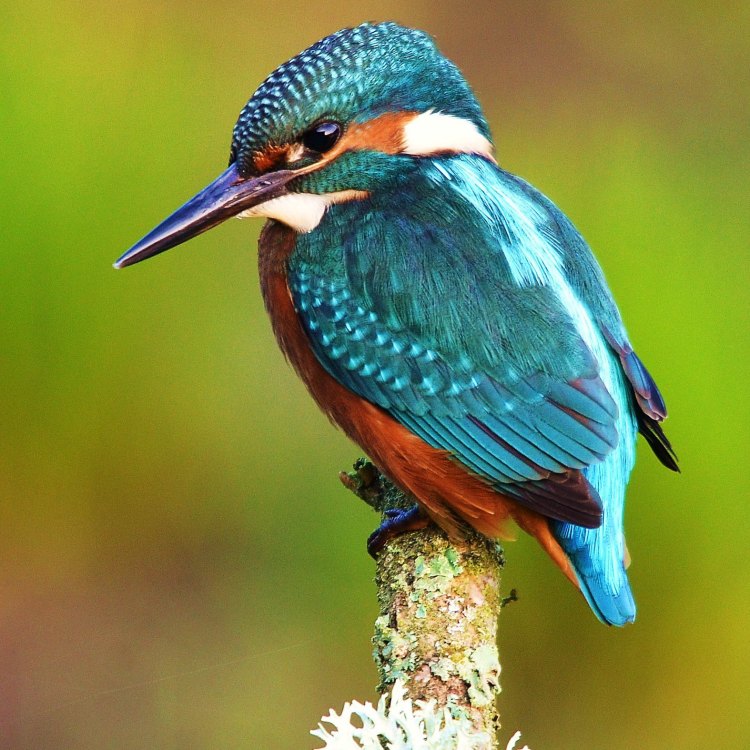
Kingfisher
- Adult Size: Small-sized bird
- Average Lifespan: 3-5 years
- Reproduction: Sexual reproduction
- Reproductive Behavior: Monogamous
- Sound or Call: Chatter calls and high-pitched whistles
- Migration Pattern: Migratory in some populations
- Social Groups: Solitary
- Behavior: Diving into water to catch fish
- Threats: Habitat loss and degradation, pollution, and predation
- Conservation Status: Least Concern
- Impact on Ecosystem: Keystone species in freshwater ecosystems
- Human Use: Birdwatching, cultural significance
- Distinctive Features: Vivid blue plumage and long, sharp beak
- Interesting Facts: Kingfishers have excellent vision and can dive into water at high speeds to catch fish.
- Predator: Predators include larger birds, snakes, and mammals.
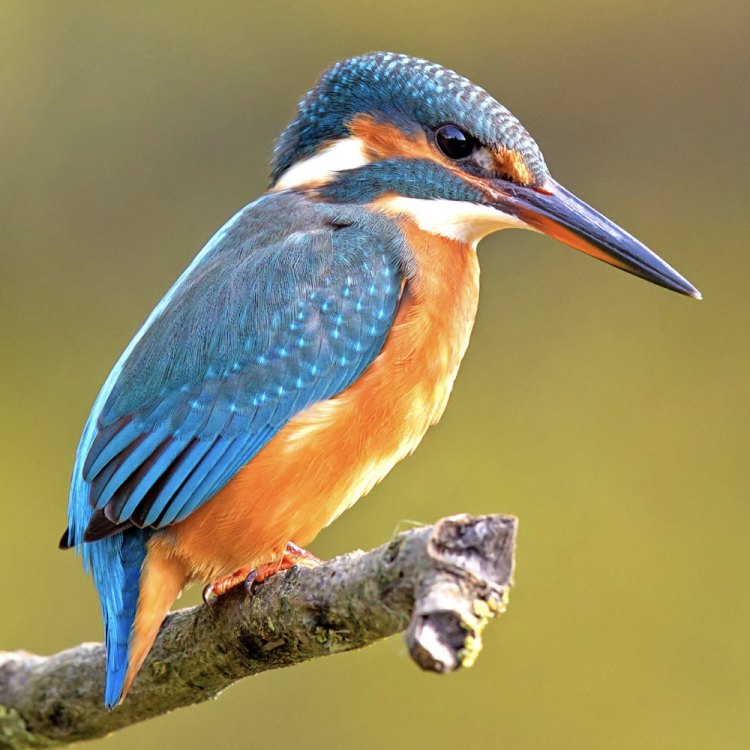
Alcedo atthis
The Majestic Kingfisher: A Bird of Brilliance and Significance
When one thinks of birds, the first image that comes to mind may be a majestic eagle soaring through the sky or a colorful parrot perched on a tree. However, hidden among these popular bird species is the kingfisher, a small-sized bird with a unique set of features and behaviors that make it truly one of a kind.The kingfisher, scientifically known as Alcedinidae, is a diverse family of birds that includes over 90 different species, each with its own distinct characteristics and habits. Among them, the kingfisher has captured the attention of bird enthusiasts, conservationists, and researchers for its striking appearance, fascinating behavior, and utmost importance in freshwater ecosystems PeaceOfAnimals.Com. Let's take a closer look at this extraordinary bird and discover what makes it stand out from the rest.
Adult Size: Small but Mighty
The kingfisher is a small-sized bird, measuring between 15-20 centimeters (6-8 inches) in length. Despite its size, it is a powerful and skillful predator, with a sturdy body, strong wings, and a sharp, hooked beak designed for catching fish. The kingfisher's long, pointed tail also plays a crucial role in its hunting techniques, helping it balance and maneuver through the air and water with ease.
Average Lifespan: Short but Sweet
Unfortunately, the kingfisher's lifespan is relatively short, ranging from 3 to 5 years. However, in those few years, they make a significant impact on their surrounding ecosystems. Their short lifespan also means that they have a faster reproductive cycle, allowing them to adapt and survive in changing environments.
Reproduction: A Royal Process
Like most birds, kingfishers reproduce through sexual reproduction, with a distinct courtship and mating process. Males show off their bright-colored plumage and perform acrobatic aerial displays to attract a potential mate Keelback. Once a pair is formed, they engage in the ritual of "billing," where they touch their beaks together, cementing their bond. Kingfishers typically mate for life, making them a monogamous species and showcasing their strong sense of commitment to their partner.
Sound or Call: Melodic Chatter and Whistles
The kingfisher may be small, but it's not entirely silent. These birds are known for their distinctive "chatter calls," which are a series of high-pitched clicks and whistles used for communication and territorial purposes. These calls can vary between species and have different meanings, from warning other birds to stay out of their territory to signaling a successful hunt.
Migration Pattern: A Journey to New Waters
Some populations of kingfishers are known to be migratory, traveling long distances to find new breeding or feeding grounds. This behavior is usually seen in species living in areas with extreme climate changes, such as colder regions. However, not all kingfishers migrate, with some choosing to stay in their territory year-round.
Social Groups: Independent and Solitary
Unlike many other bird species, kingfishers prefer to live a solitary life, rarely forming social groups or flocks. They are highly territorial and will fiercely defend their chosen area, making it a rare occurrence to spot more than one kingfisher in an area.
Behavior: Diving for Dinner
As their name suggests, the kingfisher's primary hunting technique is diving into the water to catch fish, their main source of food. These birds have keen eyesight and can spot fish from above, even through the water's surface. When they do, they make a breathtaking dive, reaching speeds of up to 25 miles per hour and emerging with their prey in their sharp beaks.
Threats: Endangered by Human Activities
Like many other species, kingfishers are facing numerous threats, mainly caused by human activities. The destruction and degradation of their natural habitats due to urbanization, deforestation, and pollution have significantly impacted their populations. They are also at risk of predation by larger birds, snakes, and mammals, which have an advantage in their larger size.
Conservation Status: A Cause for Concern
The International Union for Conservation of Nature (IUCN) has categorized the kingfisher as a species of Least Concern, indicating that their populations are stable and not facing an immediate threat of extinction. However, this does not mean that we can turn a blind eye to the plight of these magnificent birds. Continued efforts are needed to protect their habitats and reduce the impact of human activities on their survival.
Impact on Ecosystem: A Keystone Species
The kingfisher may be small, but its role in freshwater ecosystems is immense. As top predators, they help regulate fish populations, preventing them from becoming overpopulated and disrupting the entire food chain. They also play a crucial role in recycling nutrients in the water, further supporting the ecosystem's health.
Human Use: The Power of Birdwatching and Cultural Significance
Humans have been fascinated by birds since ancient times, with many cultures associating them with various symbols and beliefs. The kingfisher also holds cultural significance in many countries, with its vivid blue plumage considered a symbol of beauty, prosperity, and good luck. They are also a popular birdwatching subject, with many bird enthusiasts seeking out their vibrant colors and impressive hunting techniques.
Distinctive Features: A Sight to Behold
Among all its unique qualities, one cannot ignore the kingfisher's stunning appearance. Their vivid blue and orange plumage, paired with their long, sharp beaks, makes them a sight to behold. These features not only make them visually appealing but also serve crucial purposes in their survival and reproductive strategies.
Interesting Facts: The Kingfisher's Hidden Talents
While their hunting techniques are already impressive, there's more to the kingfisher than meets the eye. These birds have excellent vision, with the ability to adjust to changes in light and perceive colors more accurately than humans. They also have a nictitating membrane, a third eyelid that protects their eyes while diving into the water. Furthermore, they have a special gland near their beaks that produces an oil-like substance to waterproof their feathers, allowing them to effortlessly navigate through water.
Predator: A Risky Existence
Despite being skilled hunters, kingfishers are not without their predators. Larger birds, such as eagles, hawks, and herons, are a threat to their young and eggs. Snakes and mammals can also prey on their eggs and nestlings, making the kingfisher's survival a continuous battle against predators.
In Conclusion
The kingfisher is truly a bird of brilliance and significance, with its unique features, behavior, and role in freshwater ecosystems making it stand out from the rest. While human activities pose a threat to their existence, efforts to conserve their habitats and raise awareness about their importance are crucial for ensuring their survival for generations to come. So, let's appreciate and admire these little birds of wonder and continue to protect their place in our delicate ecosystem.
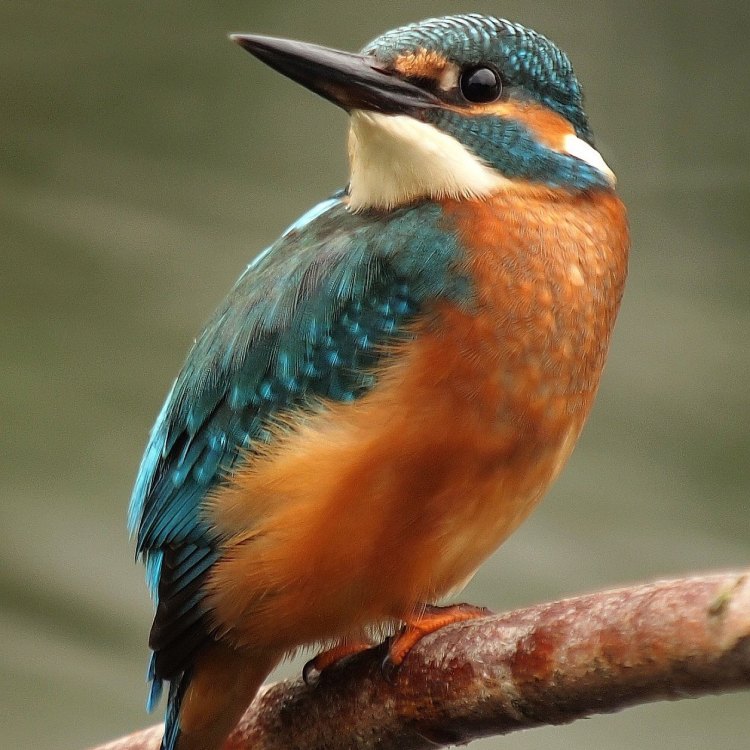
The Fascinating World of the Kingfisher: An Aerial Hunter in Water
Disclaimer: The content provided is for informational purposes only. We cannot guarantee the accuracy of the information on this page 100%. All information provided here may change without prior notice.








